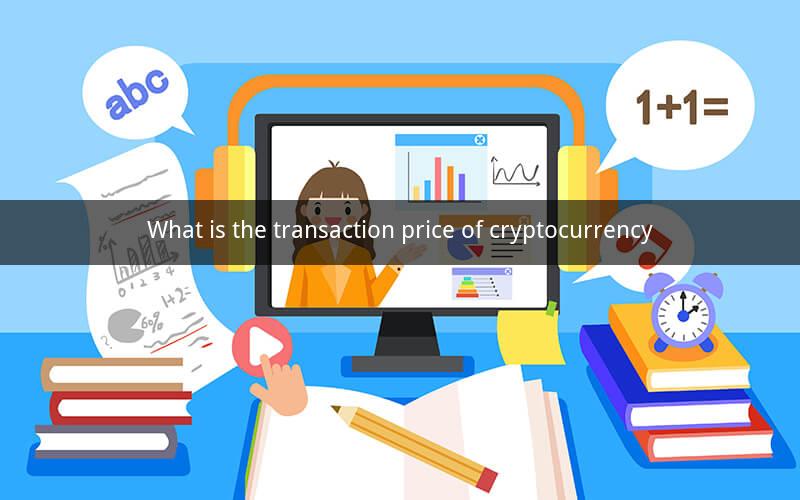
Cryptocurrency Transaction Price: Understanding the Dynamics
Table of Contents
1. Introduction to Cryptocurrency Transaction Price
2. Factors Influencing Cryptocurrency Transaction Prices
3. The Role of Blockchain in Determining Transaction Prices
4. Market Supply and Demand Dynamics
5. The Impact of Fees on Cryptocurrency Transaction Prices
6. Real-World Examples of Cryptocurrency Transaction Prices
7. The Future of Cryptocurrency Transaction Prices
8. Conclusion
1. Introduction to Cryptocurrency Transaction Price
The transaction price of cryptocurrency refers to the amount of currency required to complete a transaction on a blockchain network. Unlike traditional fiat currencies, cryptocurrencies operate on decentralized networks, which means that transaction prices can vary widely based on various factors. In this article, we will explore the dynamics behind cryptocurrency transaction prices and how they are determined.
2. Factors Influencing Cryptocurrency Transaction Prices
Several factors contribute to the fluctuation of cryptocurrency transaction prices. These include:
- Network congestion: High levels of network congestion can lead to increased transaction prices as more users compete for limited block space.
- Transaction fee market: The transaction fee market is a competitive environment where users can bid for block space, affecting the price.
- Blockchain technology: The underlying technology of a cryptocurrency can impact its transaction prices, with some blockchains more efficient than others.
- Market sentiment: The overall sentiment in the cryptocurrency market can influence transaction prices, as investors may be willing to pay more for faster confirmation times.
3. The Role of Blockchain in Determining Transaction Prices
The blockchain technology underpinning cryptocurrencies plays a crucial role in determining transaction prices. Each blockchain has its own set of rules and parameters that affect transaction costs:
- Block size: The size of a block can limit the number of transactions that can be processed in a given time frame, affecting transaction prices.
- Block time: The time it takes to mine a new block and add it to the blockchain can impact transaction prices, with shorter block times potentially leading to higher costs.
- Confirmation time: The time it takes for a transaction to be confirmed by the network can influence transaction prices, with faster confirmations typically being more expensive.
4. Market Supply and Demand Dynamics
The basic principles of supply and demand also apply to cryptocurrency transaction prices. When demand for a cryptocurrency increases, transaction prices may rise due to higher competition for block space. Conversely, if demand decreases, transaction prices may fall.
5. The Impact of Fees on Cryptocurrency Transaction Prices
Transaction fees are a significant component of cryptocurrency transaction prices. These fees are paid to miners for their work in validating and securing the network. Factors that can affect fees include:
- Market competition: The level of competition among miners can influence fees, with more competitive markets potentially leading to lower fees.
- Network congestion: During periods of high network congestion, miners may increase their fees to prioritize transactions with higher fees.
- Transaction complexity: Transactions that require more computational effort may carry higher fees.
6. Real-World Examples of Cryptocurrency Transaction Prices
Real-world examples of cryptocurrency transaction prices can provide insights into how these prices are determined. For instance, Bitcoin's transaction fees have fluctuated widely over time, with peaks during periods of high network congestion.
7. The Future of Cryptocurrency Transaction Prices
The future of cryptocurrency transaction prices is uncertain but can be influenced by several factors:
- Technological advancements: Innovations in blockchain technology could lead to more efficient networks and lower transaction prices.
- Regulatory changes: Government regulations may impact the way cryptocurrencies operate, potentially affecting transaction prices.
- Market adoption: Increased adoption of cryptocurrencies could lead to higher demand and, consequently, higher transaction prices.
8. Conclusion
Cryptocurrency transaction prices are influenced by a complex interplay of factors, including network congestion, transaction fees, and market dynamics. Understanding these factors is crucial for users and investors navigating the cryptocurrency landscape.
Questions and Answers
1. Q: What is the primary factor affecting cryptocurrency transaction prices?
A: The primary factor is network congestion, which can lead to higher transaction fees as users compete for block space.
2. Q: Can transaction fees be lower on some blockchains compared to others?
A: Yes, transaction fees can be lower on some blockchains, particularly those with more efficient consensus mechanisms and higher block sizes.
3. Q: How do miners determine the transaction fees they charge?
A: Miners typically charge fees based on the demand for block space, with higher fees prioritizing transactions for confirmation.
4. Q: What is the role of market sentiment in cryptocurrency transaction prices?
A: Market sentiment can influence transaction prices, as optimistic or pessimistic investor views can lead to higher or lower demand for a cryptocurrency.
5. Q: Can a cryptocurrency transaction price be negative?
A: No, cryptocurrency transaction prices cannot be negative as they represent the cost of completing a transaction.
6. Q: How does the size of a block affect transaction prices?
A: Larger blocks can accommodate more transactions, potentially lowering transaction prices during periods of high network congestion.
7. Q: Are transaction fees the same for all cryptocurrencies?
A: No, transaction fees vary between cryptocurrencies based on their blockchain technology and market conditions.
8. Q: Can transaction prices change rapidly in the cryptocurrency market?
A: Yes, transaction prices can change rapidly due to factors like network congestion and market sentiment.
9. Q: What is the difference between a transaction fee and a network fee in cryptocurrency?
A: A transaction fee is paid to miners, while a network fee refers to the overall cost of using the blockchain network, which includes transaction fees.
10. Q: How can users minimize their cryptocurrency transaction costs?
A: Users can minimize transaction costs by waiting for less congested times, choosing lower transaction fees, and using more efficient cryptocurrencies.